Alienation Through Beautification, Engagement After Alienation
By Andrew Maerkle
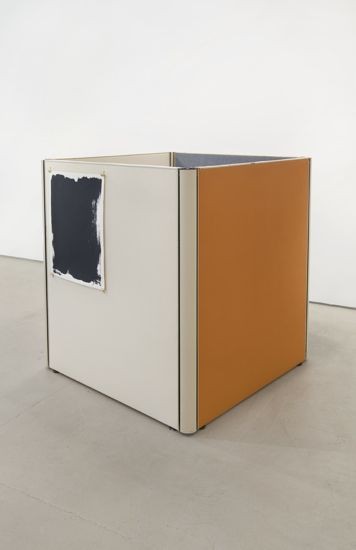 A Facility Based on Change (2010), mixed media, 122 x 122 x 152 cm.
A Facility Based on Change (2010), mixed media, 122 x 122 x 152 cm.All images: Courtesy the artist.
In her mixed-media practice, New York-based artist Mika Tajima combines aspects of sculpture and performance. However, rather than creating sculptural works as an artifact of performance, she investigates the performative potential of sculpture. This gives her installations an architectural quality, as they are not merely arrangements of objects but also constitute spaces for activity.
This was most apparent in Tajima’s solo exhibition debut at New York’s Elizabeth Dee Gallery in 2007, “Disassociate.” There, she created an installation of moving, reversible partitions recalling stunted cubicles or the baffles used in recording studios to minimize ambient noise, which she then reconfigured numerous times over the course of the exhibition. The installation also hosted a series of improvisational noise performances conducted by Tajima through her collaborative group New Humans in collaboration with artist, architect and poet Vito Acconci, who contributed vocals, and musician C Spencer Yeh on violin.
Since then, Tajima has continued to return to the partition as a form that is both rich in creative potential and loaded with symbolic meaning. ART iT met with Tajima at her studio in New York to discuss her recent work, the intertwined legacies of Modernism and corporate aesthetics, and the subjectivity of walls.
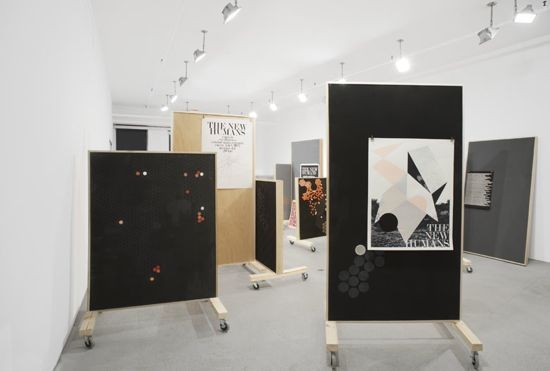
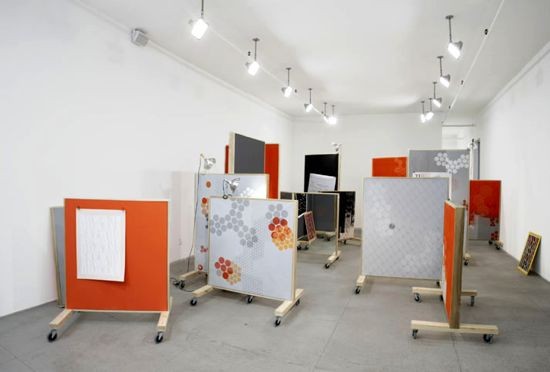 Both: Disassociate (2007), installation view at Elizabeth Dee Gallery, New York.
Both: Disassociate (2007), installation view at Elizabeth Dee Gallery, New York.ART iT: Your work draws inspiration from many different fields, but one thing that interests me in particular is your referencing of architectural form. For you, is architecture the representation of Modernist thought in a way that Modern art is not?
MT: Certainly issues related to architecture, and an investigation of the failures of Modernism, thread my entire practice. I often reference both art and architecture, actually, but I would say the difference is that Modernist architecture permeates everyone’s life.
What I’ve been investigating recently is interior architecture and the work of the American furniture and design firm Herman Miller. In the 1960s, Herman Miller invented the office cubicle – then-branded as the “Action Office” – which is of course now ubiquitous. The concept for the cubicle started with this utopic language of progress and efficiency, modularity, standardization – the language upon which Modernism was built. However, that vision has led to a kind of corporate hell, by which I mean both the individual experience of alienation in the contemporary workplace, and also the continuing creation and enforcement of geopolitical borders.
I see a connection between interior architectural space and practices like building the Green Zone wall in Iraq. Even with the legacy of the Berlin Wall, we still build new walls all around the world. Such structures closely resemble cubicles in their function as obstructions to isolate and separate, contain and control. And considering this relationship from an art context, I draw a further association between these structures and Minimalist monochrome paintings, which I see as interim structures wavering somewhere between architecture and painting. With Minimalist paintings, their identities are always being performed and constructed as the situation necessitates, so they alternate between being paintings, architectural spaces, sculptural objects, announcement signboards and even narrative performance spaces.
ART iT: Did this investigation into the cubicle play directly into your installation at Elizabeth Dee Gallery in New York, Disassociate (2007), which featured moving panels that also served as an environment for live sound performances?
MT: Yes. My investigation of cubicles was inspired by Jean Luc Godard’s film Sympathy for the Devil (1968), also known as One Plus One. One scene in the film features the Rolling Stones recording the title song in a studio that has a cubicle-style configuration, with barrier panels separating each performer. I thought that was an interesting metaphor. Everyone thinks of bands or other collective experiences as progressive, idealized ways of working, but the reality is that when the group is together, they’re alienated, there are power struggles, and it’s all embodied in this isolating space.
Disassociate directly referenced the Godard film. The double-sided painting panels in the exhibition were sometimes an “installation” and were at other times utilized for a series of performance events, which happened three times over the exhibition’s course. The installation was on view for six weeks and we also changed its configuration almost every week as well.
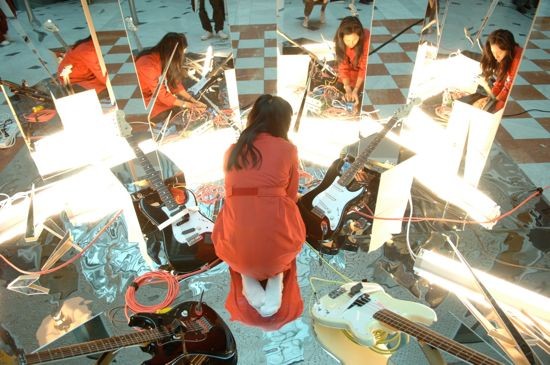
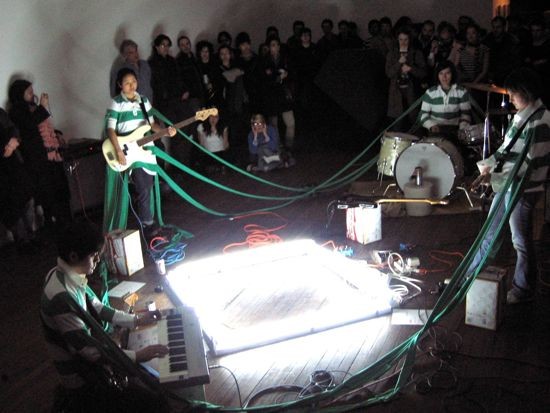 Above: Performance view of Echoplex (live) at Astrup Fearnley Museum of Modern Art, Oslo, 2005. Photo Tom Henning Bratlie. Below: Performance view of Grass Grows Forever in Every Possible Direction by the New Humans at Swiss Institute, New York, 2004.
Above: Performance view of Echoplex (live) at Astrup Fearnley Museum of Modern Art, Oslo, 2005. Photo Tom Henning Bratlie. Below: Performance view of Grass Grows Forever in Every Possible Direction by the New Humans at Swiss Institute, New York, 2004.ART iT: What kind of ideas were you addressing before Disassociate, before Sympathy for the Devil?
MT: Before that I was working more toward demonstrating the multiple identities of sculptural elements through the incorporation of performance. The problem was that most people latched onto the performance aspect rather than starting with the sculptural element, which obscured the idea that the work contains more than one identity.
ART iT: Are you referring to your collaborative performance group, New Humans, specifically?
MT: New Humans was one aspect of that early work, and I was also included in a few group shows for which I was asked to do performances. After a point I felt it was necessary to insist that people recognize the sculptural elements of my practice. It was odd to essentially have to say, “You don’t understand, it’s not about the performance, it’s about the sculpture hosting the performance.”
ART iT: You mention that you were already looking at this idea of what might be called “moving parts,” and that this continued into Disassociate. What attracted you to that approach?
MT: For a long time it seems Modernism was considered the end game of cultural history, and when Michael Fried published his paper on the theatricality of Minimalism, “Art and Objecthood” (1967), Donald Judd and his peers had a real problem with their work being placed in a context in which it could be seen as anything other than what they intended – whether a sculpture or a painting. But the funny thing is, now we’re living in a period when everything is collapsing together – popular culture, low culture – and if you go to Crate & Barrel you can find a Judd-style sofa. I like this kind of cheapened aesthetic. The Minimalists’ attempt to deny the theatricality of their work and its alternate readings is what interested me in experimenting with how a painting could become a sculpture or a platform for a performance among other things. This sense of moving parts, constantly shifting identity, is I feel the exact opposite of the end game of Modernism.
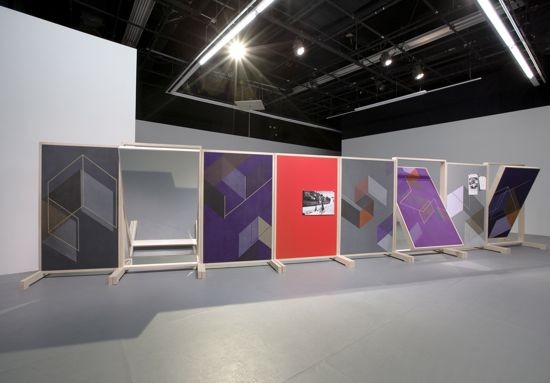
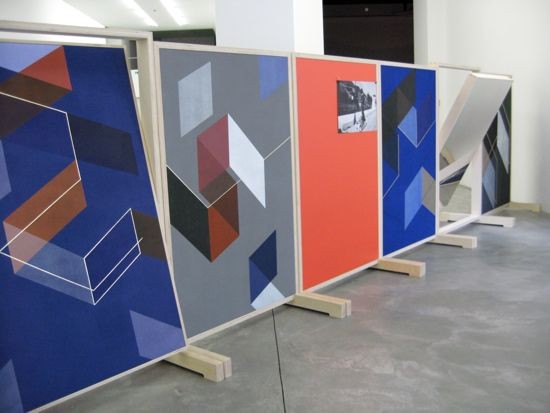 Above: The Double (2008), installation view at The Kitchen, New York. Below: The Double (2008), installation view at Centre for Opinions in Music and Art, Berlin.
Above: The Double (2008), installation view at The Kitchen, New York. Below: The Double (2008), installation view at Centre for Opinions in Music and Art, Berlin.ART iT: In a way that’s also where the architectural element enters, too, with the idea that a wall is structural but it’s also a support for hanging things or it can also be something to look at in its own right.
MT: Exactly. Once I hit upon the wall form, I kept returning to it with each project; somehow it creeps into all the new pieces I make. I can’t let go of it because it’s a very poignant structure for me. It is the subject, it is its own structure, it is the host of other things, it becomes all these different positions, and it’s symbolic of our environment – things that can alternate between being a support and a blockade.
Even now, there is a movement in the states of Arizona and Texas to build a wall along the US border with Mexico, which is such a barbaric “solution” to issues of immigration, and devolves into this alienating gesture of “us” versus “them.” The wall is a visual reminder of the difference between one thing and another, the hierarchies of a given situation.
ART iT: Did thinking about the cubicle as wall lead to the installation The Double (2008), presented in New York at the Kitchen, which includes a row of flipping, free-standing partitions?
MT: For that project, I wanted to create a real feeling of separation. In addition to the Kitchen, The Double was simultaneously on view in Berlin at the Centre for Opinions in Music and Art (COMA), so making this long wall was really symbolic for me, with a kind of doubled blockade in Berlin. It was around the time of the US troop “surge” in Iraq, and all these local artists in Baghdad had been hired to paint the Green Zone wall with pastoral scenes as a way of masking of the horror of the war. I also found on the Internet a photo of the Green Zone wall that shows these spaces where children could break through to the other side, which became for me an allusion to “leaking,” or finding a way around a constricting situation. This also coincided with George Bush’s last year in office, when he began taking a hard-line stance on immigration issues in the US.
In any case, the Kitchen is known for focusing on performance, theater and dance, so when I did the show there, I thought about how to incorporate performance into the show without doing it overtly, because that would have been expected. I wanted to underscore that the work itself was embodying a performative act. Some of the panels in the installation have this flipping mirror effect, which is inspired by the film Performance (1970) by Donald Cammell and Nicholas Roeg. Since Performance is about these two characters whose identities come to overlap, I found it to be a metaphor for the split personality of my work. There’s this crucial scene when the two protagonists are in a bathroom with a flipping mirror, and it’s almost as though their personalities are interchanging along with their reflections. That insertion into my work was both a specific nod to Performance, and also a way of looking at the cracks in the Green Zone wall.
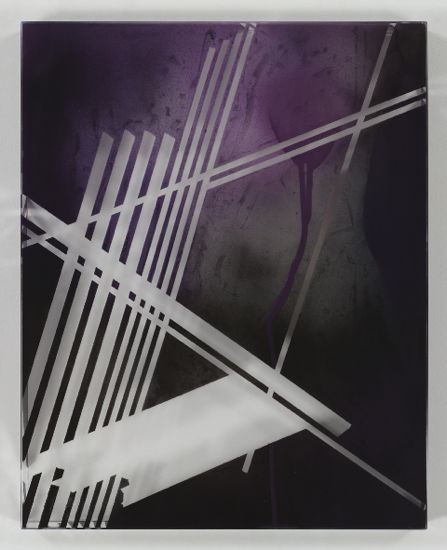 From the “Furniture Art” series (2010), mixed media on found acrylic frame.
From the “Furniture Art” series (2010), mixed media on found acrylic frame.ART iT: Are you still working with similar themes? What current projects do you have underway?
MT: I’m still working with the wall panel format, but instead of fabricating the panels, I searched on the Internet for the original Herman Miller Action Office pieces, which I thought I could use as a Readymade. I tracked down a set of 26 original panels from 1971 to a telemarketing office center in New Jersey. I’ve been re-stretching some of them with canvas and repainting them, along the lines of Minimalist monochromes. I’m still not sure how I will install them, but one structure I plan to create is a dysfunctional space that also alludes to notions of inventory and surplus of production, almost recreating the state of the telemarketing office where I found the panels.
The office itself was pretty much the installation I envision. The panels were in such neglected condition, some leaning in a forlorn way, and people were working in the same space, too. It was bizarre. So the installation will be arranged to evoke that bleak atmosphere – “It looks like we’re going to have to lay off Martha and John this week, so we better take away their cubicle walls” – a feeling of constantly being contingent. I’m also going to make a sculptural structure out of the panels that is a complete cube, which will be really dysfunctional. It’s going back to Judd or Sol LeWit, touching on two places at the same time: Minimalism and corporate life.
Another project is making new painting-panel-tile sculptures, which also develop from my Herman Miller research. After Herman Miller started producing the cubicles, they realized that the form was alienating, and commissioned a textile designer named Alexander Girard to design patterned fabrics that could be stretched over the panels, almost like a painting. They called these “environmental enhancement panels.” I think that’s a really perverse approach to softening an unpleasant experience. It anticipates asking artists to paint the Green Zone wall in Iraq, masking the horror or pretending it’s not there. This seems to typify the way the corporate world thinks of beautification, decor, art.
The new sculptures use found photo frames of a kind that was popular in the 1970s. The frame is a boxlike, molded Plexiglas volume. As with the wall panel, the frame is both the surface and the structure. I am making reverse paintings by masking out abstract architectural shapes on the inside of the frames and then spray-painting them. Because you can see all the way through the frame surface to the wall, the painting becomes immaterial, and is revealed as a flimsy structure. I think displaying a multitude of them together would really push the idea of industrialized art and manufactured “beauty.”
ART iT: You talk about looking at the failures of Modernism, yet also quote Modernist aesthetics. Are you trying to rehabilitate certain aspects of Modernism, or is it a pure critique?
MT: I wouldn’t use the word “rehabilitate,” but it’s not wholly a critique, either. I have a great respect for the Modernistic aesthetic, which leads to an impulsive tension of attraction and repulsion. However, the work is definitely a critique of our current living conditions. In having the work function in multiple ways, I think people can see how our lives are modulated as well, but I’m also hopeful that some production can come out of this scenario. With Disassociate, it’s not like I had people sitting in the cubicles and typing. We made recordings out of the sound performances – admittedly strange recordings – and I used the situation to make more work.
The live performances always started before people entered the space, so it was unconventional. At almost any music show, there’s a clear difference between the audience and the performer. But because the installation was configured with the performers each in their own cubicles spread throughout the space, there was no front or back, no “good” or “bad” place to see everything. A visitor might only have been able to see one performer, or none at all, because there may have been a wall or other people in the way. It was an unnerving sound experience, I imagine, for people who entered the gallery not knowing what to expect. Suddenly, the viewer became very involved in the actual piece.
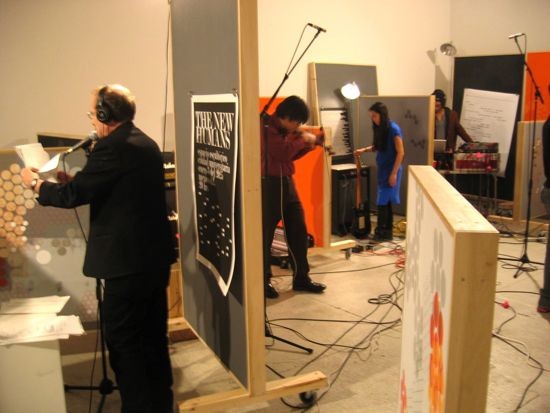 Disassociate (2007), performance view with Vito Acconci, C Spencer Yeh and New Humans at Elizabeth Dee Gallery, New York.
Disassociate (2007), performance view with Vito Acconci, C Spencer Yeh and New Humans at Elizabeth Dee Gallery, New York.ART iT: It’s like getting them involved through alienating them.
MT: Yes, something like Artaud’s Theatre of Cruelty, where the spectacle surrounds you rather than being in front of you, and you’re caught off-guard. In Disassociate we also had a video camera recording everything, and if you were in the audience you might realize that you’re on camera and that your breathing is being recorded into the soundtrack. You become very aware of the fact that you are in the middle of something that is in production.
Mika Tajima is represented by Elizabeth Dee Gallery, New York, and Kevin Bruk Gallery, Miami. She has upcoming projects at the Fabric Workshop and Museum, Philadelphia, and Elizabeth Dee, in addition to an ongoing collaboration with filmmaker Charles Atlas.
